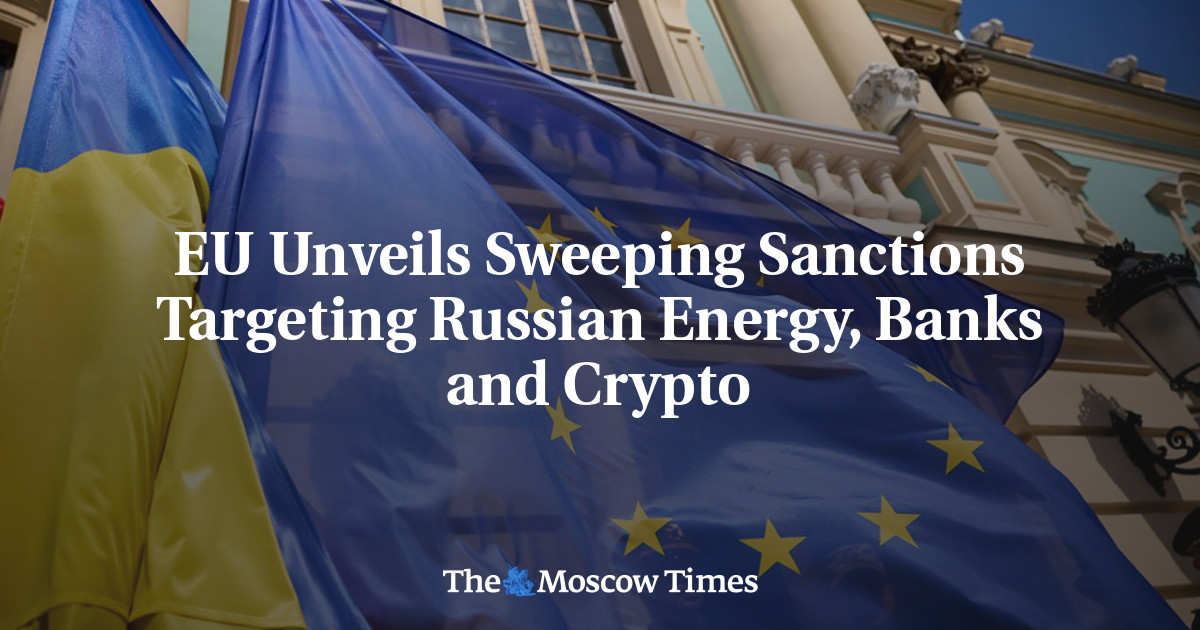The European Union on Thursday imposed its 19th package of sanctions on Russia over the invasion of Ukraine, targeting Moscow’s key energy revenues, financial networks and technology supply chains.
The economic restrictions also extend to Belarus, Chinese companies and crypto platforms in a bid to further squeeze Russian President Vladimir Putin’s ability to fund the military campaign and punish those aiding it.
“It is becoming increasingly difficult for Putin to finance his war. Every euro we deny Russia is one it cannot spend on war,” EU foreign policy chief Kaja Kallas said in a statement.
The package includes a ban on Russian liquefied natural gas imports from Jan. 1, 2027, with short-term deals banned within six months, and expanded restrictions on the oil giants Rosneft and Gazprom Neft.
The EU has also banned 117 “shadow fleet” tankers from its ports and services, bringing the total to 557. Brussels estimates the number of “shadow fleet” tankers used to help Russia circumvent Western oil price caps could be as high as 1,400.
It imposed controls on the travel of Russian diplomats suspected of espionage, requiring them to notify or seek authorization before leaving their host countries for another EU country within the visa-free Schengen area.
In crypto and financial measures, the EU blacklisted the developer and issuer of Russia’s sanctions-busting A7A5 stablecoin, targeted eight foreign banks and traders accused of sanctions evasion, expanded transaction bans on five Russian lenders and banned EU engagement with Russian payment systems.
New listings also targeted arms suppliers from China, North Korea and the UAE, as well as 45 other entities, to Russia’s military-industrial complex, including several in China, India and Thailand.
Export bans were expanded to cover microelectronics, chemicals and key metals, as well as a prohibition on acyclic hydrocarbons to choke off revenue.
Restrictions were also placed on AI, quantum computing, and space-based services, along with a new rule requiring EU authorization for all services to the Russian government.
Separately, Europe was also looking at ways to shore up Ukraine’s finances as the war drags on through a fourth year.
EU leaders were looking at Thursday’s summit in Brussels to give a preliminary green light to plans for a mammoth 140-billion-euro ($162 billion) loan for Ukraine using frozen Russian central bank assets.
While key questions remain, diplomats hope EU leaders will give the bloc’s executive the go-ahead to draw up a formal legal proposal for the loan that would only be paid back by Kyiv once Moscow recoups the damage from its invasion of Ukraine.
Even if an initial nod is given at the summit, there still looks set to be months of wrangling over the small print before the loan can be finalized.
AFP contributed reporting.

